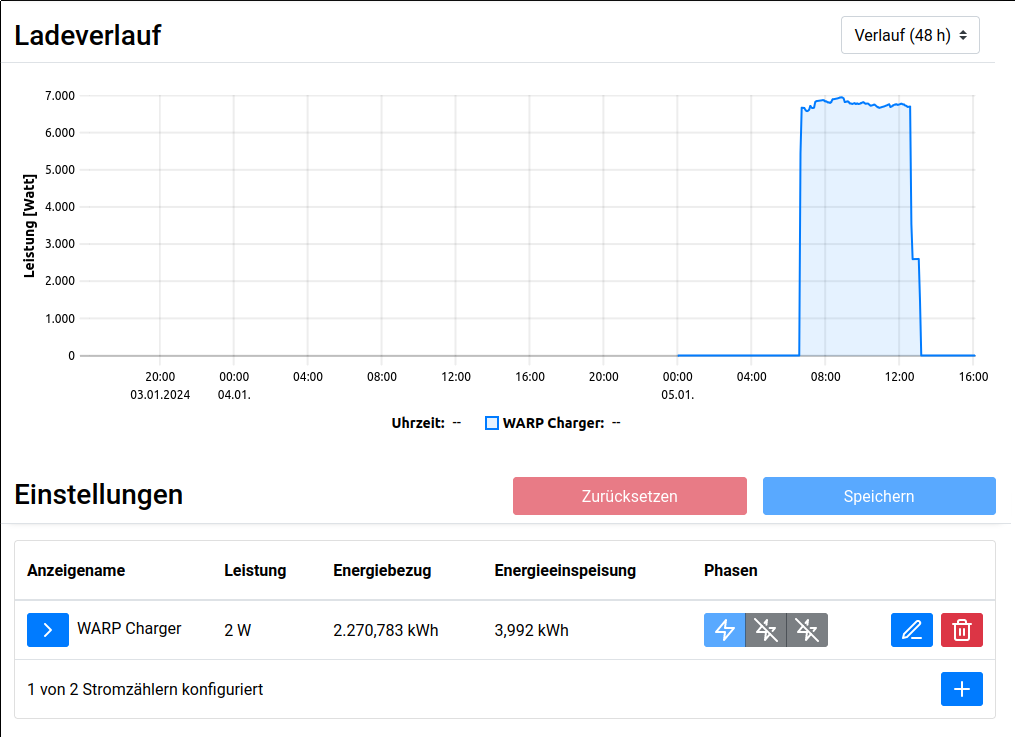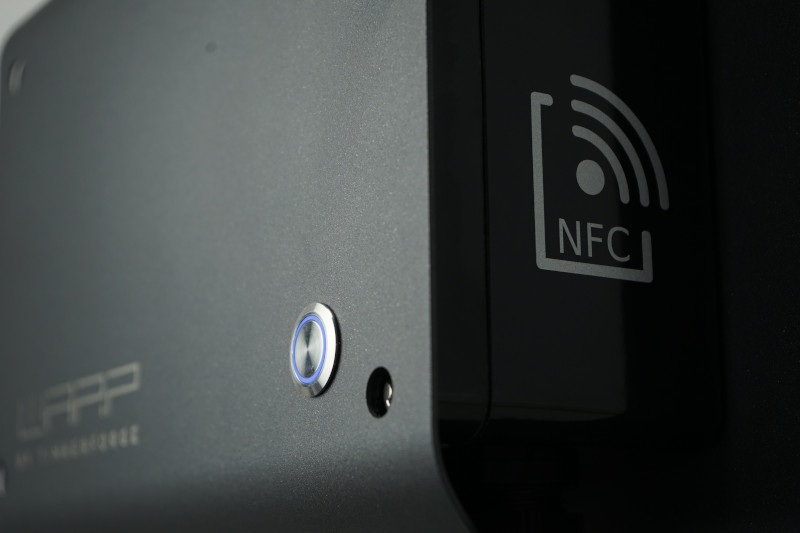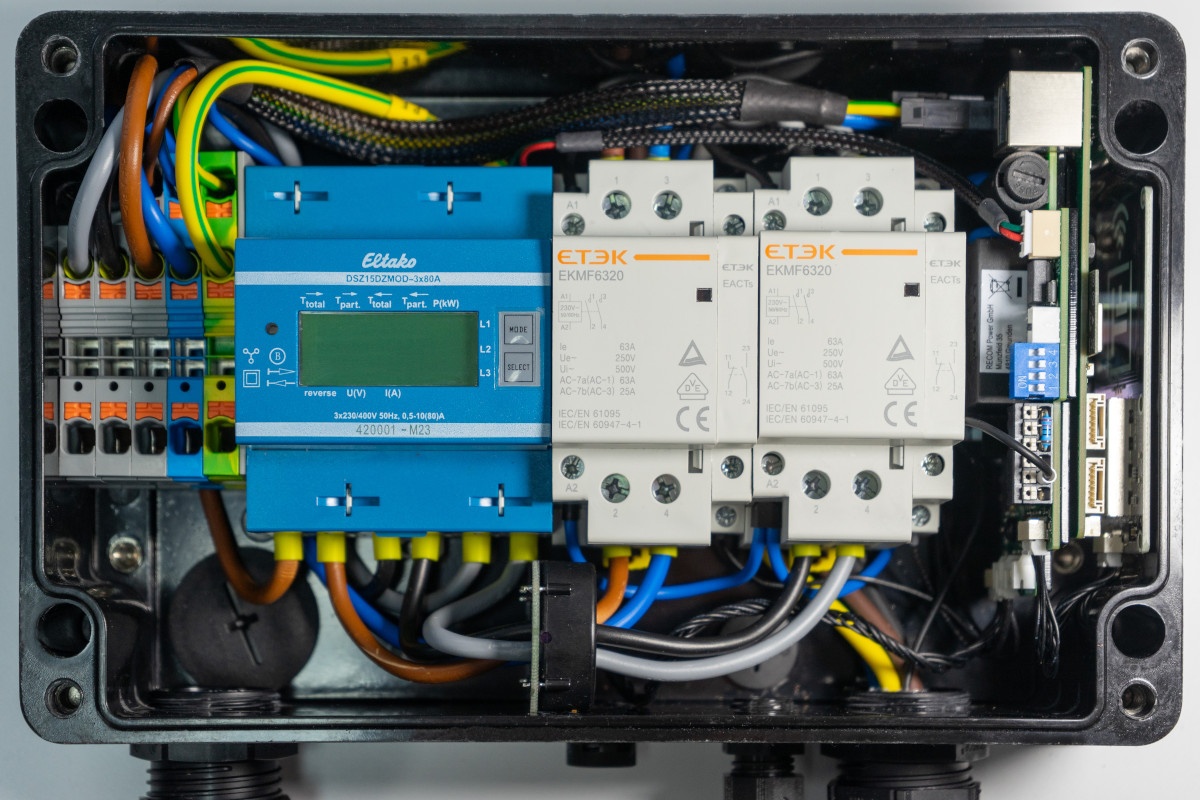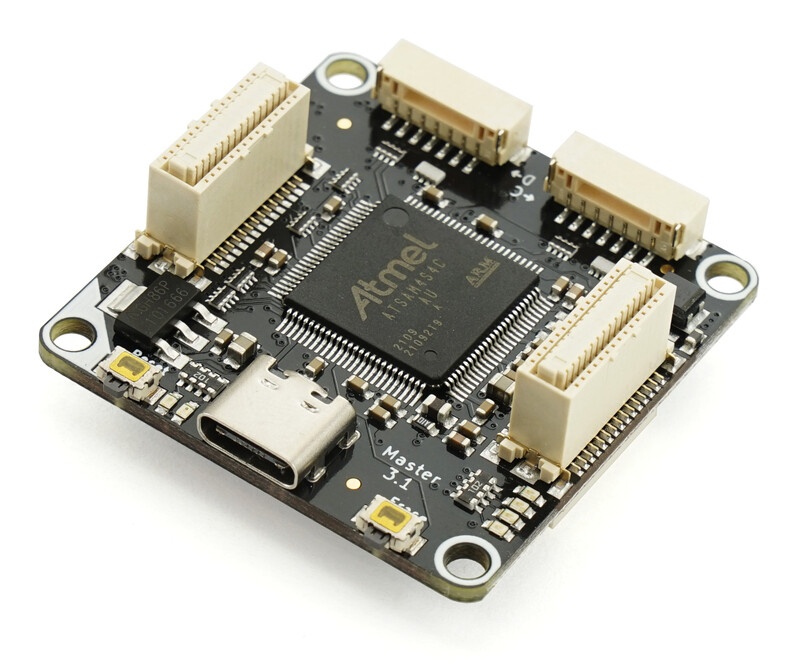Our booth at Power2Drive is ready! If you want to drop by spontaneously, send us an email — we still have free tickets available.
Blog
Booth at Power2Drive
Olaf Lüke - 6 months ago
New Features in WARP(2) 2.2.1 and WEM 2.0.2
Olaf Lüke - 1 year, 8 months ago
This blog entry is only available in german.
Review 2023 / Outlook 2024
Olaf Lüke - 1 year, 10 months ago
Review 2023
In 2022, we still struggled with issues related to the chip shortage. However, in 2023, these problems were mostly resolved. Only in isolated cases it is still challenging to procure components. Fortunately, material costs have also not continued to rise and have stabilized.
In 2023, there were many developments in the area of our wallboxes. For example, we released the WARP Energy Manager, allowing users to analyze home energy consumption. With the latest firmware, various Modbus-RTU, API, Sunspec, and soon Modbus-TCP electricity meters can be read. The meter data is stored locally on the Energy Manager and can be analyzed in hourly and monthly graphs. Additionally, the Energy Manager enables automatic phase switching for WARP2 Chargers, allowing charging with lower power (~1.4kW) for charging with PV. User-defined rules can also control external devices through the Energy Manager.

With the WARP2 Charger wallboxes, there have been significant developments in the software as well. In addition to numerous detailed improvements, new interfaces (OCPP, Modbus TCP, Wiregard) were introduced, providing the option for energy and time limits, along with the addition of a charging logbook. The WARP Charger now supports up to 32 NFC tags. Users can define rules for setting charging currents or sending MQTT messages. We have extended the warranty for a WARP Charger to 3 years. There are also visual updates – in addition to stainless steel, wallboxes and charging stations are now also available in powder-coated variant in the color DB703.

One of the major efforts for us in 2023 was the relocation to a new and bigger property. Apart from the actual move of materials and offices, there were several side issues. For instance, we struggled for a long time to establish a reliable internet connection. This was unexpected, considering that the property has a fiber connection that was used by the previous owner. We had to make do with an LTE connection for months. The relevant departments of the involved companies did their best, or at least, we were assured of that. Well, let bygones be bygones. We have moved, and everyone is delighted with their new offices, ample storage space, and good infrastructure! Next on the agenda is the installation of a solar power system of nearly 200 kWp and a charging infrastructure with 16 WARP Wallboxes and 10 PV carports in our parking lot. The parking lot has already been expanded for this purpose, and the foundations for the carports are also already in place. We will keep you updated on this.
For the Tinkerforge system of building blocks, there were also many improvements, such as new firmwares.
Outlook 2024
In the first quarter, we plan to release the WARP3 Charger (photo is of early prototype, there will still be some changes).

The WARP3 Charger will feature two contactors, allowing for the internal switching between 1-phase and 3-phase charging. Together with the ability to read meters using SunSpec, this enables PV surplus charging without an external WARP Energy Manager. Two DIN rail-mounted 63A contactors are used to ensure no compromises are made, avoiding soldered or less able contactors. Additionally, a terminal block will always be present, even in the Pro variant, simplifying the electrical installation. The internal LAN connection has also been improved. WARP3 uses the same basic housing as the WARP2 Wallbox, so we had to significantly reduce the size of the charging electronics to fit everything into the enclosure. Furthermore, WARP3 features an RGB LED for easier communication of various states. Dynamic load management will also be introduced through a software update in the near future.
On the software side, the development of the WARP3 Charger is shared with the WARP2 and even the WARP1 Wallbox. Any further innovations, as long as they are technically feasible, will therefore also be implemented in these Wallboxes.
In addition to our WARP products, the Tinkerforge system of building blocks is also being further developed. For example, we will soon be releasing a new HAT Brick with a more powerful power supply.
The year is still in its early stages. Look forward to many news and improvements!
We wish you all the best for 2024!
Team Tinkerforge
WARP2
Olaf Lüke - 4 years, 2 months ago
This blog entry is only available in German: https://www.tinkerforge.com/de/blog/warp2/
Master Brick 3.1 - USB-C and 7 pole Bricklet connectors
Olaf Lüke - 4 years, 3 months ago
2017 (https://www.tinkerforge.com/en/blog/outlook-for-2017/) we started to convert our Bricklets from 10 pole connectors to 7 pole connectors. This conversion was allready done for all of the Bricklets. Some Bricks are still equipped with the 10 pole Bricklet connector. With version 3.1 the Master Brick is now also equipped with four 7 pole Bricklet connectors.

The conversion of the remaining Bricks (Silent Stepper, IMU) will be done soon, such that in the future all Brick <-> Bricklet connections will use 7p <-> 7p Bricklet cables. For new projects it will be much easier to choose the right Bricklet cable, the 7p <-> 7p Bricklet cable will allways be the right choice.
Master Brick 2.1, 10p <-> 10p and 10p <-> 7p Bricklet cables will still be available in the shop. Spare parts as replacements for old projects will be available. These parts are listed in the "legacy" category. All non legacy Bricklets in the shop now only have the 7p <-> 7p Bricklet cable option left.
In comparison to Master Brick 2.1 the Master Brick 3.1 is equipped with 7 pole Bricklet connectors, but also with USB-C instead of Mini-USB. USB-C is at least as robust as Mini-USB but also has the advantage that the USB-C cables can be attached in both directions. Therefore it is much easier to use. Additionally the Master Brick 3.1 has a switchable Brickklet power supply. That means that you are now able to switch the power of connected Bricklets on or off during runtime with the API of the Brick.
Otherwise the Master Brick 3.1 is a one-to-one replacement for the Master Brick 2.1. Up to four Bricklets can be attached to the Brick. It is possible to build stacks of Bricks with up to 9 Bricks (1x Master Brick + 8x other Bricks). Master Brick 3.1 can be used together with Ethernet-, WIFI- and RS485 Master Brick Extension to connect attached Bricks/Bricklets with other interfaces than the USB interface of the Brick.

